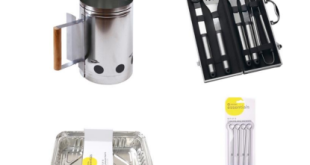 UK retail footfall in July fell by 1.1% year-on-year, according to the latest data from the British Retail Consortium (BRC) and Springboard. This figure is below the three-month rolling average of -0.4%.
UK retail footfall in July fell by 1.1% year-on-year, according to the latest data from the British Retail Consortium (BRC) and Springboard. This figure is below the three-month rolling average of -0.4%.
Covering the four weeks from July 2 to July 29, the BRC-Springboard’s monthly monitor said the high street was hardest hit with a drop of 2.1%, while shopping centres experienced their fourth consecutive month of decline with a 1.3% fall. But retail parks saw growth of 1.7%.
Across the country, the East and south-east of England were the only two regions that saw footfall growth. The fastest growth was in the East. But the steepest decline was in the south-west of England and Greater London, which both showed a fall of 2.1%.
Wales showed the first decline in seven months at -0.9% and Scotland saw a further decline from -0.2% in June to -0.4% in July.
BRC chief executive Helen Dickinson OBE commented: “Most shopping destinations saw a decline in footfall in July compared with the previous year. Even high streets, which have seen fairly stable growth over recent months, reported a decline.
“Retail parks were the exception. They have fared relatively well since March, reflecting in part lower rental costs compared with prime and town centre locations, as well as convenience for shoppers.
“The overall decline in footfall translated into weak sales performances for stores, in non-food particularly, which fell further into negative territory as consumers reined back spending on non-essential items.”
She noted that the vacancy rate in UK retail was now “at its highest” for a year and said this news “fails to brighten the picture for what was evidently a challenging month for retailers. Nearly one in 10 retail shops currently lie vacant and those in some vulnerable communities remain persistently empty, limiting the chances of these places to thrive.
“What’s more, September’s RPI [Retail Price Index] which is expected to be in the region of 4%, represents a substantial increase in business rates for retailers in April 2018. So the Government’s commitment to switch to CPI [Consumer Price Index] indexation should really be brought forward from 2020.”
Springboard marketing and insights director Diane Wehrle said: “July’s results might well mark a sea change in consumers’ willingness to spend, as it was the first time since January that footfall dropped during both retail trading hours and into the evening.
“Over the last few months, the growing importance of the leisure-based trip has become a key part of the narrative when talking about retail destinations. But a 0.5% drop in footfall post-5pm in July is the first evidence of a tightening of purse strings.
But she added: “Despite a drop in fashion sales, consumers increased their spending on products for the home and out-of-town locations were the beneficiaries. July’s 1.7% increase in out-of-town footfall is the fifth increase in as many months, and averaging +1.9% since March compared with -0.3% over the previous five month period.”
Diane concluded: “These results, together with the high level of consumer borrowing and an increase in the vacancy rate to 9.6% – the highest it’s been since July last year – suggest that trading conditions could be reaching a tipping point into a period of restraint.”
 Housewares Business-to-business magazine for housewares retailers and their suppliers
Housewares Business-to-business magazine for housewares retailers and their suppliers



